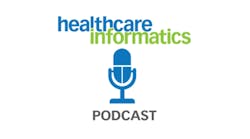The healthcare delivery system has evolved much like a giant “whack-a-mole” game. The prevailing model of care delivery has been for hospitals to focus on the facilities, technologies and support resources of care while physicians determined both the supply and demand for medical services. As we work to “whack” poor performance or negative outcomes problems pop out in another part of the system.
- Comparative Effectiveness: A comparison of the impact of different options that are available for treating a given medical condition for a particular set of patients. The analysis may focus only on the relative medical benefits and risks of each option, or it may go on to weigh both the costs and the benefits of those options
- Information Exchange for the Purpose of Improving Care Coordination: The eligible professional demonstrates to the satisfaction of the Secretary…that during such period such certified EHR technology is connected in a manner that provides, in accordance with law and standards applicable to the exchange of information, for the electronic exchange of health information to improve the quality of health care
- Expanded Clinical Quality Reporting: “Meaningful use” must include submitting information ‘in a form and manner specified by the Secretary’ on such clinical quality measures and such other measures as selected by the secretary
The greatest challenge in addressing any of these transformation drivers is our current “whack-a-mole” approach to managing the care process. Most notably, the lack of integration of hospital and physician work processes. The healthcare industry must design a “system of care” – one where each part is interrelated, organized and integrated to accomplish specific goals. From a HITECH perspective, this means hospitals must move beyond a focus on CPOE to take responsibility for health information exchange for the purpose of outcomes management both within the acute and ambulatory settings. Health information exchange across provider sites has the potential to create significant benefits including:
- Quality of care improvement through improved access to data
- Reduction in costs through efficiency, effectiveness, productivity gains and avoidance of redundant provider services
- Improvement in the patient experience resulting in higher “customer satisfaction”
- Enhancement of compliance with legal, accreditation and standards of care practices
- Expanded market share with potential for new revenue streams
Technology alone will not make this happen. We must deliberately design new integrated systems of care. Rather than letting the system evolve organically as it has in the past, we must use “systems thinking” approaches to consider the entire care process—from the technology and interventions used, the human resources and their respective roles, the location of care is delivered, the decision making and management philosophies applied, the patient segments served, the order and sequencing of tasks and the incentives required. Until physicians and hospitals align their goals, and collaborate to integrate care processes; we will continue to play “whack-a-mole” healthcare.



